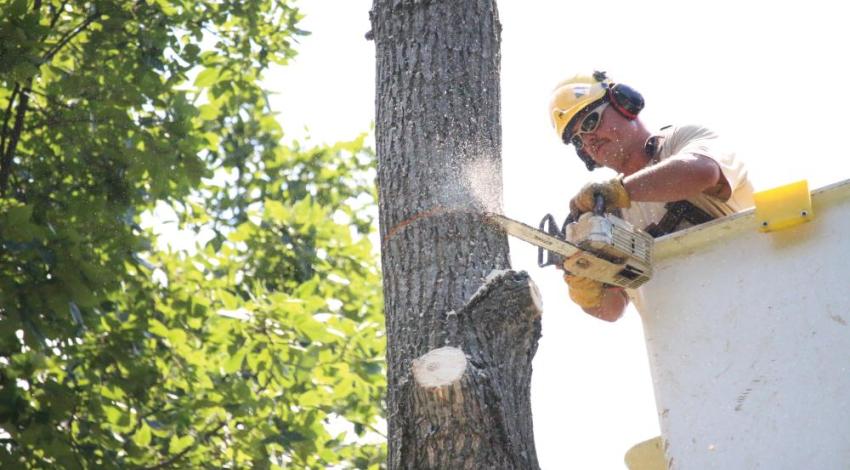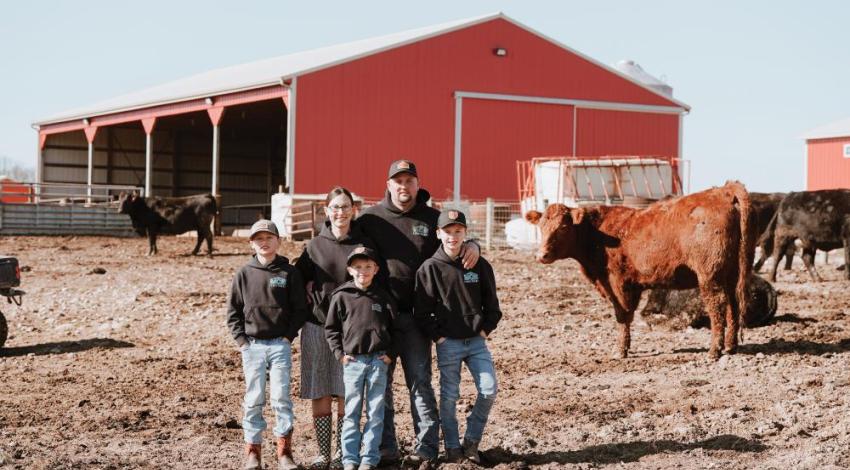Over the last few months, Ohio Cooperative Living has taken a look at why we still need coal — an analysis of cost and reliability factors of different generation resources; a review of the sources of electricity used to power Ohio’s co-op member homes and businesses; an explanation of the significant investments the co-ops have made that have resulted in the Cardinal Plant becoming one of the cleanest coal-burning plants in the world; and a preview of a coming program to introduce more renewable generation into the electricity mix.
President Joe Biden has announced a goal for the United States to decarbonize its electricity grid by 2035. Unless there are major technology breakthroughs, however, it would mean eliminating the use of coal and natural gas to produce electricity within the next 15 years — a tall order, considering fossil fuels currently produce more than 60% of the nation’s electricity, and even more than that here in Ohio.
This month, we take a brief look at some of the challenges that must be overcome in order to decarbonize the grid.
ADDING TRANSMISSION
Hundreds of billions of dollars will be needed to build and upgrade the transmission system to carry more electricity from wind and solar. An MIT study found transmission capacity will need to be doubled, and recent transmission projects have taken as long as 17 to 20 years to complete.
HAVING ELECTRICITY AT ALL TIMES
Wind and solar can produce electricity only when the wind is blowing and the sun is shining. Lack of solar power when the sun goes down contributed to California’s power blackouts and emergency measures last summer. Conventional electricity sources, like coal, will be needed for the foreseeable future to back up wind and solar.
ALLOWING TIME FOR TECHNOLOGY
The gap between electricity demand and wind and solar output must be filled by other sources of electricity. The cost of battery storage is dropping, but it is still expensive. Carbon capture, utilization, and storage (CCUS) would allow fossil fuel-fired degeneration to continue, but while it shows promise, it is risky to assume it can be both cost-effective and widely deployed within 15 years without significant investment and incentives from the federal government.
CHANGING ELECTRICITY MARKETS
The nation’s existing power markets were not designed to handle large amounts of renewable power. New systems will need to be developed to operate carbon-free power markets.
AVOIDING STRANDED COSTS
More than 30% of U.S. electric generating capacity is less than 20 years old — including much of the scrubber equipment that makes the Cardinal Plant, owned by Ohio’s electric cooperatives, one of the cleanest coal-fired plants in the world. Those sources of generation still need to be paid for whether they’re being used or not.
MAINTAINING FUEL SECURITY AND FUEL DIVERSITY
The electricity grid will become less fuel secure and less fuel diverse as the power sector is decarbonized. Both attributes help the grid to maintain its reliability and resilience.
PROTECTING JOBS
More than 185,000 jobs nationwide are supported by coal-fired electric power generation. All would be at risk, as would some of the 686,000 jobs supported by the natural gas industry.
These and other challenges will have to be overcome to decarbonize the grid while maintaining reliable, resilient, and affordable supplies of electricity.

What they're saying
INDUSTRY LEADERS
“We need to be careful not to let aspirational goals like “carbon free by 2035” impose arbitrary limits on our ability to maintain a reliable and affordable supply of electricity.”
– Patrick O’Loughlin | President and CEO, Ohio’s Electric Cooperatives
“What concerns the industry as a whole is 2035, and what you’re hearing from the industry is a recognition that we need to get it right. We can’t compromise reliability.”
– Lisa Barton | Executive vice president and COO, American Electric Power Co.
TRADE ASSOCIATIONS
“Where’s the technology today that can allow that to happen? What are going to be the commercially viable, always-available, and affordable carbon-free technologies to provide electricity? People can set goal X, Y, or Z, but are the lights going to go on whenever consumers flip the switch? And will they be able to afford it?”
– Jim Matheson | CEO, National Rural Electric Cooperative Association (NRECA)
“It’s not something we can do in a very short period of time, and it’s going to come at considerable costs.”
– Desmarie Waterhouse | Vice president of government relations, American Public Power Association (APPA)
ENERGY ANALYSTS
“The key threat is that too much investment too fast would raise customer bills more than customers might be willing to spend.”
– Travis Miller | Equity strategist, Morningstar Research Services
“The pace of wind and solar isn’t going fast enough to meet the 2035 target. But even if it was, there would also have to be contributions from new technologies like batteries, carbon capture and storage, nuclear, or hydrogen.”
– Tom Rowlands-Rees | Head of North American research, BloombergNEF
LABOR UNIONS
“We support the transition to renewable energy but disagree with arbitrary numbers that don’t take into account our current energy mix and energy needs.
2050 is certainly better than 2035.”
– Yvette Pena O’Sullivan | Executive director, Laborers’ International Union of North America
“We will not support policies that accelerate the closure of coal plants. The closures are already happening more rapidly than communities can deal with and are leaving economic devastation behind them.”
– Lee Anderson | Director of government affairs, Utility Workers Union of America
GRID OPERATORS
“When we start looking at what 2040 looks like, you look at the performance of existing assets and the storage capabilities of existing battery technologies. All our models suggest there are just enough days when the wind doesn’t blow and the sun is shielded, and not enough battery storage to fill those gaps.”
– Richard Dewey | CEO, New York Independent System Operator (NYISO)
“In transmission terms, 2035 is like tomorrow. It feels challenging to me.”
– Jennifer Curran | Vice president of system planning, Midcontinent Independent System Operator (MISO)
ELECTED OFFICIALS
“I think that we can do [the clean energy transition] and move forward, but we’re not going to eliminate. You can’t just say we’re going to eliminate usingELE all fossil and coal’s going to be out, oil’s going to be out, everything else, gas is going to be out of it.”
– Sen. Joe Manchin (D-WV)









